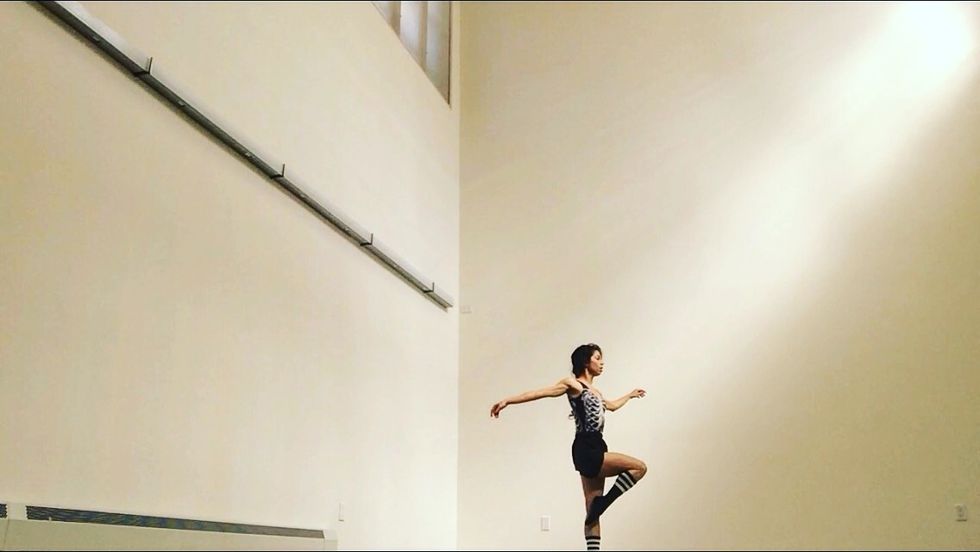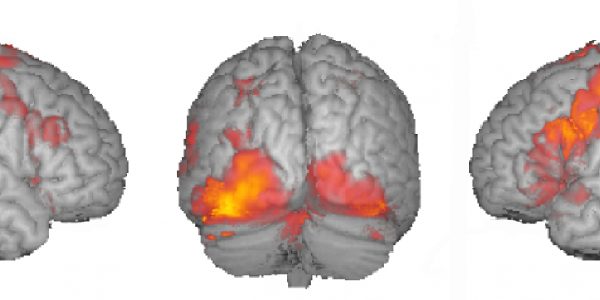LISTEN TO THIS ARTICLE:
Participating in dance at a young age has many benefits. These include the development of motor skills, such as balance and coordination, and an opportunity to explore the mind-body connection through creative expression. Despite the numerous positive outcomes of kids and teens participating in dance, there is a high prevalence of eating disorders among this group. Female adolescents have a 10% lifetime risk of developing a clinical eating disorder. However, the risk is even greater for those who participate in aesthetic sports. In these spaces, such as figure skating and dance, the competitor’s body is a central focus of competition.
A recent study concluded that people who dance are 3 times more likely to suffer from eating disorders than the general population. They are a group that is particularly vulnerable to developing anorexia nervosa and Other Specified Feeding and Eating Disorders (OSFED). OSFED is a newer and relatively unknown term. It encompasses those who do not meet the exact criteria of anorexia, bulimia, or binge eating disorder but struggle with many symptoms. This means that the prevalence of disordered eating among adolescents, especially dancers, is likely to be even higher than the current published statistics. Although this report focuses mostly on female-identifying athletes, it is important to note that all athletes of any gender who participate in dance or other aesthetic sports are at risk of developing disordered eating behaviors. The recommendations included are inclusive of all genders.
Disordered eating starts at a young age
A recently published study about eating disorders in people who dance suggests that problematic behaviors surrounding food begin at an early age. One research team explored the eating behaviors of ballet and artistic gymnastics aged 10-12 in comparison to a group of their peers who do not dance. The results are alarming. In the dancing group, 1 in 4 girls felt dissatisfied with their body weight. They also reported reducing consumption of fats and carbohydrates and feeling angry with themselves after eating too large of a meal.
Moreover, the dancers had significantly lower body weight on average than their peers by approximately 14 pounds. Despite this, they reported needing to improve their body and appearance at higher rates than the comparison group. Almost 50% of the dancers conveyed that they responded to stressful situations by avoiding food. There were also reports of laxatives and appetite suppressant usage in this age group.
Causes of eating disorders in dancers
The ideal dancer body
Western culture has long perpetuated an unrealistic view of attractiveness that is based on being thin. Teen girls are a particularly vulnerable population as they are more likely to buy into this socially defined beauty ideal. Disordered eating patterns are more prevalent among this group.
These pressures are even higher in dancing culture, especially ballet. A 2022 study interviewed female-identifying competitive dancers aged 14-18. The participants described the ideal dancer body as being “tight and compact” with minimal body fat, no curves, increased muscle definition, and no “jiggling.” A majority of the participants believed that this body ideal was customary and important. The ideal body associated with being a ballerina was even more specific. Ballet dancers were described as being “tall” and “skinny” with a “long neck, tiny little torso, busty back, and arched feet”. If a dancer could not achieve this body ideal, many felt excluded from ballet culture and would move onto a different type of dance.
The environment
The dance environment can reinforce negative body images associated with eating disorders. While mirrors may be a helpful teaching tool when it comes to skill development and improving technique, they also draw significant attention to the body. Dancers practice for hours each day in front of a mirror. A focus on improving technique quickly turns to intense scrutiny that can produce negative thoughts.
Moreover, dancing attire is typically made from form-fitting materials that are tight and revealing. The designs of most costumes are geared toward the ideal dancer body. When it comes to picking costumes for performances, many dancers are only given a few prototype sizes to try on that do not fit a variety of different body types. This can lead to increased stress, feelings of vulnerability, and negative self-talk. Finally, dancers perform on a stage in front of an audience, which leaves them exposed to observation, evaluation, and judgment.
Perfectionism and competitiveness
Perfectionism and competitiveness may be driving factors in the development of disordered eating behaviors among people who dance. Discipline and high standards are a part of dance culture. In the study of 10-12 year old dancers, almost 75% of the dancer group felt the need to be perfect in other areas of their life. They liked to compete and had a high need for success in more than just dance.
It is difficult to say whether individuals who inherently have perfectionistic and competitive tendencies are more drawn to ballet or whether these attributes develop due to ballet culture. It’s likely that both are at play and influence one another. These traits create a dance environment that put dancers at a high risk for developing neurotic perfectionism. This is characterized by extremely high standards, self-criticism, and disordered eating. Failure is inevitable due to impossibly high expectations. This can lead to low self-esteem and contribute to disordered eating.
Teachers, parents, and peers
Teachers, parents, and people’s peers in the dance community can contribute to the development and reinforcement of eating disorder behaviors. Research suggests that teachers are the strongest influencing factor on the lives of young dancers. They view teachers as role models and authority figures who can be trusted. Dancers often seek their teacher’s approval. Weight-related comments and pressure to be thin increase body dissatisfaction.
Parents who engaged in body talk, such as making subtle jokes about body size, added to negative self-image. The monitoring of practice and dress rehearsals can also increase stress and insecurities. Moreover, comparison between peers and learned behavior contribute to disordered eating. Some dancers may imitate the eating patterns of peers that they deem as having a more ideal body type.
Long-term effects of eating disorders
Eating disorders and disordered eating patterns among female athletes, especially high-risk groups such as people who dance, can lead to Relative Energy Deficiency in Sport (RED-S). This syndrome was formerly labeled as the Female Athlete Triad. The condition originally referred to a “triad,” or three main symptoms caused by insufficient nutrition to fuel athletic activities. The three symptoms are amenorrhea (a loss of a girl’s period), low energy availability, and osteoporosis (low bone mineral density). The term RED-S was created in order to reflect the many other negative health effects that can occur when a person does not eat enough nutritious foods to meet the energy demands of their sport. The term is also encompassing of all genders as RED-S can affect anyone who is impacted by poor health and declining athletic performance due to underfueling.
Symptoms of RED-S are increased risk of injury, impaired judgment, decreased coordination, and decreased concentration. If left untreated, RED-S can negatively affect several systems of the body. These include the reproductive, musculoskeletal, immune, metabolic, and cardiovascular systems. RED-S can cause issues such as menstrual dysfunction, stress fractures, infections and colds, low heart rate, dizziness, and a slower metabolism. RED-S can also impact psychological health, resulting in moodiness, depression, and anxiety. Since childhood and adolescence are critical developmental periods for the growth and development of the body and brain, these effects can be long lasting.
Treatment
Studies suggest that only 1 in 4 adolescents with an eating disorder receive treatment. There are many resources available to kids and teens struggling. Scheduling an appointment with a primary care provider who can refer a patient to a group of specialists is a good place to start. Eating disorder treatment among dancers requires a team-based approach. The team typically includes a physician, a dietician, and a psychologist. Family members are also a critical part of the treatment process.
- Medical Resources – Medical professionals will help treat any physical condition that has resulted from an eating disorder.
- Nutrition Resources – A dietitian can provide education and meal planning strategies. They can help develop a plan to establish healthy eating habits.
- Mental Health Resources – A combination of psychotherapy and medication may be used for treatment. Different types of therapeutic approaches may include Cognitive Behavioral Therapy (CBT), Family-Based Therapy, and Group Cognitive Behavioral Therapy. Group CBT involves working with mental health professionals alongside others who are diagnosed with an eating disorder. Medication will not cure an eating disorder. Most often an antidepressant will be prescribed in addition to psychotherapy, which can help alleviate symptoms of depression or anxiety that may co-occur with an eating disorder.
- Hospitalization – In severe cases, hospitalization may be needed to stabilize acute medical conditions. Day treatment programs are also available.They are structured for multiple hours a day a few times a week. Residential treatments may be utilized if more long-term care is needed.
Tips on eating disorders in dance
For dance teachers
Eliot Konzal is a dancer and teacher for the Maine State Ballet. She began dancing at the age of four and has been dancing for twenty years. Her resume is extensive, including experiences in the United Kingdom (UK) as a part of the London Dance Project. As someone who has struggled with her own body image and eating behaviors, she is an advocate for developing positive experiences in her studio.
Eliot hopes instructors will “focus on technique, musicality, and making sure students are safe, engaged, and happy.” She notes that “classes should not revolve around body image nor should they favor certain kids who may have those ‘ballerina body’ traits”. She tells her students, “I am here to teach you dance as well as how to be respectful, how to be kind to others, how to work as a team, and how to be accepting and welcoming towards the entire class.” Eliot stresses that any conversations about bodies should be focused on how “amazing, powerful, and strong” they are. These talks should have added emphasis on “giving thanks to our bodies for being able to do what we love.”
For parents
Eliot thinks that one of the most critical responsibilities of parents is to “make sure your child is participating because they are joyful there.” She hopes parents will listen to what kids are saying about the activity. “They will be able to tell you if a teacher is focused on the right things and if the environment is healthy.” She discourages parents from encouraging any type of eating or exercise behaviors. When it comes to nutrition, she suggests focusing on “adding things and not taking them away”. “Adding in more vegetables, more water, and more protein” and not “taking away sugary snacks” can help provide a better balance and lead to a healthier relationship with food.
For dancers
The main message Eliot hopes to send to young dancers is that dancing should be a “happy experience.” She wants dancers to “work hard, strive for professionalism, and try their best” but to always balance this with “joy.” She emphasizes: “Be kind to yourself, fuel your body right, and have fun.” Eliot speaks fondly about the many benefits of dance including developing friendships and finding community in the different places she has lived.
Dance has helped her become less anxious and “if done properly, can be really good for your heart and body.” She finds dance “extremely empowering” and hopes other young dancers will, too. “Whether I am feeling beautiful in my pointe shoes, or strong and powerful in my tap shoes, it is a way for me to appreciate my body and all the amazing things it can do.” With the right approach, participating in dance can be a positive, beneficial, and healthy experience for kids and teens.


 Learn
Learn Get News
Get News Find Help
Find Help

 Share
Share
 Share
Share
 Share
Share
 Share
Share


